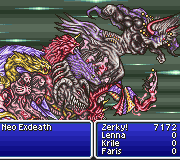Kchama posted:HONOR OF THE QUEEN CHAPTER ELEVEN In addition to the entirely correct point about Grayson having to dump a huge part of their money into simple survival where Masada does not, you seem to have missed the fact that Masada didn't actually pay anything at all for Thunder of God or Principality. The transfer of the ships from the People's Navy to Masada was an outright gift to give the PRH plausible deniability in their operations. Historical analogies would be the swarms of advanced fighters piloted by Russian "volunteers" that fought for North Korea during the Korean War, or the "domestic militias" that found lots of modern Russian munitions during the 2008 invasion of Ukraine. The notion that strong trading bonds can prevent war is a common one. One of the reasons Stalin was so willing to dismiss the warning signs of BARBAROSSA was that the Soviet Union was shipping a lot of goods to Germany at the time, and he didn't think that Hitler would be stupid enough to throw that away. Houseman is making a very common error - since he isn't part of either branch of the Church Of Humanity Unchained, the theological (and thus ideological) elements of their conflict are not real to him, and thus he expects that Simple Common Sense will convince them as soon as the Great White Savior explains it to them properly. EDIT because I hit post instead of preview. As for the LAC/Starship discussion, the point is that you cannot project power with a LAC, because it has no way to travel between star systems. They are ONLY useful as defensive weapons, so any nation that focuses on them isn't planning to operate in somebody else's star system. A nation that focuses on hyper-capable starships is one that plans to be away from home. The fact that Grayson and Masada are far, far behind the PRH and Manticore in tech makes a big difference here as well. The great powers have decided that LACs are too weak to fight because of technology advances that make them that way. The cruder Grayson/Masada tech level has a different balance. Gnoman fucked around with this message at 23:22 on Apr 30, 2020 |
|
|
|
|

|
| # ? Jun 2, 2024 09:53 |
|
Libluini posted:I can actually explain that, because I've re-read the first Honor Harrington books more than once! I don't disagree with the whole 'they're cheap guns' thing, that's fair, but.. The thing is that the idea that they're suppose to be cheap system defense guns with more firepower than a light FTL ship doesn't actually match the data, as destroyers, just about the smallest warship used by 99% of people, generally carries like 5x-10x more weapons than a LAC does. And they note that LACs have extremely poor defenses compared to a warship because they have crappy sidewalls. Not really me knocking your argument as I'm certain this is how it's presented in the books, but the specifics the books give don't really match what it says. It reminds me of the story about the Saganami game where they had trouble reconciling the written word on ships (X is heavily armed for its class) with the actual stats given in the books (Despite what was said, has less weapons than every other ship of its class). Gnoman posted:In addition to the entirely correct point about Grayson having to dump a huge part of their money into simple survival where Masada does not, you seem to have missed the fact that Masada didn't actually pay anything at all for Thunder of God or Principality. The transfer of the ships from the People's Navy to Masada was an outright gift to give the PRH plausible deniability in their operations. Historical analogies would be the swarms of advanced fighters piloted by Russian "volunteers" that fought for North Korea during the Korean War, or the "domestic militias" that found lots of modern Russian munitions during the 2008 invasion of Ukraine. I wasn't counting either of those ships in the fleet that Masada has built, because they're not a known quality. As stated, Masada has five cruisers and eight destroyers that are known to Manticore, while Grayson has three cruisers and four destroyers. The Thunder of God is a Battlecruiser, so it's not part of the ones the Masada spent a third of their GSP on over twenty years. Anyways as for the LACs, what I was getting at is LACs are (for now) only defensive weapons, they don't seem to be EFFECTIVE defensive weapons if you're expecting to defend against FTL ships, which is pretty much all the ones you'll be defending against. So it shouldn't be surprised that someone looking to defense against FTL ships would have an FTL fleet to stop them with. Kchama fucked around with this message at 00:23 on May 1, 2020 |
|
|
|
one thing with the Starfire books is that i vividly remember that preadolescent me always pictured Thebans as a bunch of Alfs  i don't know why, the description isn't that similar other than having snouts crusade posted:One of them puttered closer. He - at least Angus assumed it was a male - was dark skinned, his face covered with a fine, almost decorative spray of scales. His dark green uniform and body armor couldn't hide the strange angularity of the bony carapace covering his shoulders, and the smaller carapace over the top and back of his head gleamed under the sun. His amber eyes reminded Angus of a German Shepherd, but his blunt, vaguely wolf-like muzzle ended in flared, primate-like nostrils, and his large, powerful teeth were an omnivore's, not a carnivore's. thebans are scaled whereas alf is furred alf has short stumpy arms while thebans have big buff ape arms thebans are omnivorous scavengers whereas alf is a powerful predator
|
|
|
|
So you need the full suite of hyperspace engines etc to create a decent warship sidewall right? You can't just build 'System defence ships', e.g. Rather than LAC's, a full size cruiser, with a cruiser sidewall, but the hyperdrive bit replaced with even more shooty stuff.
|
|
|
|
Deptfordx posted:So you need the full suite of hyperspace engines etc to create a decent warship sidewall right? Even if that would be possible, the main point of my argument was that LACs is what Grayson is able to build fast enough to even try to keep up with Masada building up their FTL-capable fleet. They're lovely, but they are what Grayson has chosen to depend on because the alternative would be suicide, as until Manticore shows up, they simply can't build real warships fast enough. One of the (often forgotten, as Weber mentions this maybe 1 time in dozens of books) real reasons Grayson takes off so fast after Manticore steps in is that they can massively upgrade their food production, both orbital and what is left on the toxic ground, and reduce their liabilities drastically. In the not so distant future, Grayson will begin to construct arcology-like domes on the ground, using Manticoran anti-grav technology. This way they can then completely de-toxify the now enclosed ground and do stuff like leaving their homes without cumbersome protection, or grow food that can't as easily be pelted with missiles. Even without Masada being occupied by Manticore, this enormous boost to their economy would have turned the tide eventually: As Kchama said, with the difference in population, Masada should be a non-issue. And with the giant millstone that is Grayson's toxicity greatly reduced, this becomes true. Well, until Masadans start assassinating Manticoran politicians, but that's still in the far future! 
Libluini fucked around with this message at 10:12 on May 1, 2020 |
|
|
|
Kchama posted:I don't disagree with the whole 'they're cheap guns' thing, that's fair, but.. As I'm concerned, when an author tells me one thing in his books, and later adds contradicting bullshit in some external "data" I'll probably never see, the bullshit is clearly wrong and should be ignored. That said, I don't have numbers handy for the size difference between destroyers and LAC, but please remember, even a small upgrade in available volume means you have a ton more place for stuff to put somewhere. Not only that, LACs entire thing is that they can only mount all those (still comparably not much, mind you) weapons because they don't spend space on FTL-drives and whatever else is needed to make a ship FTL-capable. If you take a LAC-sized ship and make it FTL-capable, you probably would end up with an almost unarmed scout. quote:Anyways as for the LACs, what I was getting at is LACs are (for now) only defensive weapons, they don't seem to be EFFECTIVE defensive weapons if you're expecting to defend against FTL ships, which is pretty much all the ones you'll be defending against. So it shouldn't be surprised that someone looking to defense against FTL ships would have an FTL fleet to stop them with. They aren't effective, that's true. But if Grayson was only building effective ships, Masada would have bombed them back into the stone age by now, so until now they've been trapped by the choice of either building tons of crappy ships to counter Masadan capabilities, or lose. Also remember, all Masadan FTL-ships are 100% lost when they lose their FTL-drive while fighting in the Grayson system. Even if the ships are just crippled, they can only blow themselves up or get captured by Graysonite forces. This means Graysonite LACs don't have to completely defeat their FTL-capable counterparts, just cripple them enough. Together with their cheapness, they're probably a good choice for a purely defensive nation trying to also keep a huge, expensive civilian infrastructure running at the same time.
|
|
|
|
Deptfordx posted:So you need the full suite of hyperspace engines etc to create a decent warship sidewall right? You don't need a hyper generator for sidewalls. You don't even need impellers (note the comment in the text about Grayson's early orbital fortresses not even having spherical sidewalls), and it is absolutely possible to build sub-light ships at cruiser scale or larger and just not fit a hyper generator. Manticore's junction fortresses are essentially like that later on in the series: Giant behemoths that are larger than any SD and thus severely limited by them being too large for compensators to work, but still fitted with impeller rings because impellers are still vastly superior to any sidewall. Noone in the Honorverse does this, however; I think it's because hyper generators don't scale linearly with ship size, so the tonnage and space saved in a cruiser or larger just doesn't end up giving you enough space to fit in significantly more shooty bits to make the loss in strategic mobility worth it.
|
|
|
|
ignore the stupid double post
|
|
|
|
Libluini posted:As I'm concerned, when an author tells me one thing in his books, and later adds contradicting bullshit in some external "data" I'll probably never see, the bullshit is clearly wrong and should be ignored. These details aren't in external stuff, but in the actual books themselves. He does it constantly, too. But that doesn't jive with what Gnoman was saying, that they could mount MORE guns because all they had were guns when in fact they can only mount a tiny amount of guns period. Like, yeah destroyers are a fair bit bigger than LACs, but nobody at all uses anything smaller for actual combat because they suck. quote:They aren't effective, that's true. But if Grayson was only building effective ships, Masada would have bombed them back into the stone age by now, so until now they've been trapped by the choice of either building tons of crappy ships to counter Masadan capabilities, or lose. I mean, one of the core parts of the Manticore's argument against Houseman saying that Grayson stands an equal chance is that Grayson is significantly worse because most of their assets are LAC. If they had spent that LAC money on actual warships it would have been better spent. So it seems like the cheap defenders are pound for pound WORSE than spending an equal amount of money on larger warships. Especially since warships can actually sustain long fights, since LACs not only have few missile tubes but also all of their missile tubes are one-shot. They are effectively helpless once they fire a volley. As for 'Masadan FTL-ships are 100% lost once they lose their FTL drive' that is... not really true. I mean yeah they can't leave through FTL, but losing your hyper generator doesn't mean that you can't fight or fly. They aren't even doomed to being blown up or captured, because they can still evade, shoot lasers, launch missiles and blow up your defenses and other LACs. Anyways, as far as I remember LACs never do much of anything in this book at all. The_E posted:You don't need a hyper generator for sidewalls. You don't even need impellers (note the comment in the text about Grayson's early orbital fortresses not even having spherical sidewalls), and it is absolutely possible to build sub-light ships at cruiser scale or larger and just not fit a hyper generator. Manticore's junction fortresses are essentially like that later on in the series: Giant behemoths that are larger than any SD and thus severely limited by them being too large for compensators to work, but still fitted with impeller rings because impellers are still vastly superior to any sidewall. From On Basilisk Station, impellers at least scale with ship size - SDN impellers are so huge that a freighter that was nearly SDN size could barely fit military SDN impellers in it. Here's what we know about hyper generators and their size: Nothing. So it's hard to say one way or another. Chances are it's basically a 'free' tonnage slot, knowing Weber. Kchama fucked around with this message at 18:28 on May 1, 2020 |
|
|
|
There's an explicit mention somewhere that dispatch boats are LAC sized, and cannot fit any weapons or defenses at all due to the mass of their sails and hyper generator. LACs are weak because they are at the absolute minimum size for any warship at all. You explicitly can build sublight only ships that are massively powerful bevause they don't waste space on hyper generators. That's what the Junction and Planetary forts are.
|
|
|
|
|
Gnoman posted:There's an explicit mention somewhere that dispatch boats are LAC sized, and cannot fit any weapons or defenses at all due to the mass of their sails and hyper generator. LACs are weak because they are at the absolute minimum size for any warship at all. That does make sense, yeah. So I guess hyper generators have to be pretty big if the smallest they can be is the size of a LAC.
|
|
|
|
Chapter 20 is up over at Sufficient Velocity. GB, take a b... no, take a victory lap. Strut.
|
|
|
|
Gnoman posted:There's an explicit mention somewhere that dispatch boats are LAC sized, and cannot fit any weapons or defenses at all due to the mass of their sails and hyper generator. LACs are weak because they are at the absolute minimum size for any warship at all. dispatch boats are about twice the size of a large, modern LAC iirc couriers were compared in size not to LACs, but to frigates, warships poorly armed enough that they are no longer used
|
|
|
|
PupsOfWar posted:dispatch boats are about twice the size of a large, modern LAC This appears to be true. Relatedly, I finally found some data on a frigate's armament after some searching, and they appear to be, in general, twice as armed as a LAC while still being hyper capable. Like the Nat Turner is literally a frigate-sized Shrike but with twice the armaments. So LACs don't match up well to even the smallest warship.
|
|
|
|
Almost like weber has a hard time keeping things consistent 
|
|
|
|
Kchama posted:That does make sense, yeah. So I guess hyper generators have to be pretty big if the smallest they can be is the size of a LAC. there's also the Streak Drive quote:But the Mesan Alignment hadn't abandoned it, and finally, after the better part of a hundred T-years of dogged research, they'd found the answer. It was, in many ways, a brute force approach, and it wouldn't have been possible even now without relatively recent advances (whose potential no one else seemed to have noticed) in related fields. And even with those other advances, it had almost doubled the size of conventional hyper generators. But it worked. Indeed, they'd broken not simply the iota wall, but the kappa wall, as well. Which meant the voyage from New Tuscany to Mesa, which would have taken anyone else the next best thing to forty-five T-days, had taken Anisimovna less than thirty-one. 50% more speed by doubling the size of the hyper generator. quote:And he’d been equally wrong in his initial assumption that the operation had been scrubbed for some reason. The streak drive-equipped vessel had been considerably larger than most of the Alignment’s courier vessels, but it had still been effectively four times as fast as Star Galleon’s plodding best speed. beeg dispatch boot
|
|
|
|
Wibla posted:Almost like weber has a hard time keeping things consistent Indeed! It's also funny because unlike LACs, Frigates can actually reload their missile tubes, so they aren't basically useless after one volley. Though missile tubes taking up a lot of space stops making much sense once you get to the missile pods, wherein they contain more missiles in small pods than ships can hold in their entirety.
|
|
|
|
The issue isn't the space missile tubes take up, it is the space magazines take. A tube full of missile takes up only a little more tonnage than the missile itself does, and generally less than the combination of missile+armored magazine+reloading mechanisms. This isn't something Weber made up - almost all modern warships have gone from rail launchers loaded via magazine to massed single-shot VLS cells because you get a much higher fire rate and actually hold more missiles.
|
|
|
|
|
Weber botched the job though, because he wanted the actual 'gun' that fires the missile to be important too - there's all kinds of So his missile pods aren't VLS cells. VLS cells would make perfect sense. What they are is boxes of guns dropped behind the ship. And that makes...less sense. Also it's a bit backwards to argue that 'the issue isn't the space missile tubes take up, it's the space magazines take' when the issue Kchama is complaining about is that ships can somehow carry more missile pods in their magazines than they can regular old missiles! Somehow the bigger thing takes up less space?
|
|
|
|
The pod ships pack more missiles in because they involve structural changes and higher levels of automation than pre-pod designs, resulting in significantly lower crew sizes and therefore freeing up space to cram more pods in to. The books discuss this, starting with In Enemy Hands (and is of course part of Honor lecturing her mentor-cum-husband about him being Wrong When She's Right™.
|
|
|
|
aren't LACs really just space PT boats
|
|
|
|
Aerdan posted:The pod ships pack more missiles in because they involve structural changes and higher levels of automation than pre-pod designs, resulting in significantly lower crew sizes and therefore freeing up space to cram more pods in to. The books discuss this, starting with In Enemy Hands (and is of course part of Honor lecturing her mentor-cum-husband about him being Wrong When She's Right™. The problem is that not only can they carry more missile pod-missiles than actual regular missiles, but people mathed it out and they often carry more mass in missiles than the ships mass themselves. Like, by the last couple of books, a small fleet of pod-layers can carry literally millions of missiles in their pods. Which was doubly dumb since not long before this happened, they had all of their orbital facilities and shipyards destroyed, including their missile construction and storage facilities. But they still had literally millions of missiles to throw around willy-nilly without any fear of running out, and also building all these didn't bankrupt their economy considering that the cheapest this could cost is a trillion for one fleet's armaments, if they were using warhead-less 1900-era Light Cruiser missiles only and not the many times bigger MDM capital ship missiles. Kchama fucked around with this message at 20:43 on May 3, 2020 |
|
|
|
Aerdan posted:The pod ships pack more missiles in because they involve structural changes and higher levels of automation than pre-pod designs, resulting in significantly lower crew sizes and therefore freeing up space to cram more pods in to. The books discuss this, starting with In Enemy Hands (and is of course part of Honor lecturing her mentor-cum-husband about him being Wrong When She's Right™. There is still absolutely no way to make "missile+launcher" take up less room than "missile," and in a podlayer, every single missile is paired with its own bespoke launcher. Podlayers should always carry fewer total missiles than standard warships, and gain benefit in being able to fire larger alpha strikes.
|
|
|
|
General Battuta posted:There is still absolutely no way to make "missile+launcher" take up less room than "missile," and in a podlayer, every single missile is paired with its own bespoke launcher. Podlayers should always carry fewer total missiles than standard warships, and gain benefit in being able to fire larger alpha strikes. It's true. Though even before this they still carried more missiles than they have mass. Like, the 1905-era Super Dreadnoughts carried 100,000 counter missiles (which seems rather excessive considering they only have like 72 launchers) and 9600 capital missiles (80 launchers). And Super Dreadnoughts are about 1700 meters long, and only 100 meters wide. Capital-sized missiles of the era were ~15m long. So basically the entire middle of the ship would have to be missiles. And they still had room for five thousand people and dozens of apparently massive lasers/grasers and a gravlance. The Medusa-class, which is the first pod-layer, is 1400m long, so even smaller than the 1905-era SDNs, and holds 492 missile pods. Doesn't sound too bad, right? Except each pod holds 10-20 missiles (depending on whether they have the Multi-Drive Missiles in them or not), and also you have to take in account that each pod has to have a reactor in them and individual mass drivers for each of the missiles, plus the casing for all of this. So that's about 5000 missiles that are 1.5 to 2 times the size of a regular missile. So it's back to the mass of the 10,000 missiles in a smaller ship. Kchama fucked around with this message at 21:47 on May 3, 2020 |
|
|
General Battuta posted:There is still absolutely no way to make "missile+launcher" take up less room than "missile," and in a podlayer, every single missile is paired with its own bespoke launcher. Podlayers should always carry fewer total missiles than standard warships, and gain benefit in being able to fire larger alpha strikes. This is later mentioned as an explicit weakness of the pod types. Conventional ships carry more ammunition.
|
|
|
|
|
Also because pod-ships have a big open area at the back to keep all the missiles in they're not as tough and resistant to damage as a regular warship and a badly placed hit on the stern could cripple a pod-warships firepower. Not that anyone thinks to exploit this of course because any enemy with a brain is destined to fail into line with our heroes.
|
|
|
|
|
FuturePastNow posted:aren't LACs really just space PT boats Until Weber decides "I'm getting bored with Napoleonic War but in space. Let's WW2 up this thing and introduces Carriers at which point they become TBF Avengers but in space."
|
|
|
|
Deptfordx posted:Until Weber decides "I'm getting bored with Napoleonic War but in space. Let's WW2 up this thing and introduces Carriers at which point they become TBF Avengers but in space." I think he got bored with that by a book or two and they stopped being important again.
|
|
|
|
True.
|
|
|
|
Gnoman posted:This is later mentioned as an explicit weakness of the pod types. Conventional ships carry more ammunition. And the pre-pod SDNs had heavier energy armaments, making them more effective at the short ranges were combat no longer takes place by the end of the series.
|
|
|
|
Ferrosol posted:Also because pod-ships have a big open area at the back to keep all the missiles in they're not as tough and resistant to damage as a regular warship and a badly placed hit on the stern could cripple a pod-warships firepower. That's the "up the skirt" shot they always talk about in these books and it's been a primary goal of their warship combat since roughly forever because there's no magic gravity shields there. It's just really hard to do because there's a ton of other defenses there and they can maneuver to avoid it. General Battuta posted:There is still absolutely no way to make "missile+launcher" take up less room than "missile," and in a podlayer, every single missile is paired with its own bespoke launcher. Podlayers should always carry fewer total missiles than standard warships, and gain benefit in being able to fire larger alpha strikes. This is how it is in the books and Honor even explicitly mentions it when she's yelling at White Haven for dismissing the podships out of hand, saying that the huge alpha strike power is worth sacrificing 20% of their overall missile capacity or whatnot. I feel like the reduction should probably be larger, more like 40-50%, but the reductiont is mentioned.
|
|
|
|
Khizan posted:That's the "up the skirt" shot they always talk about in these books and it's been a primary goal of their warship combat since roughly forever because there's no magic gravity shields there. It's just really hard to do because there's a ton of other defenses there and they can maneuver to avoid it. IT should be way less since every pod has to have its own reactor too in addition to the tubes and missiles themselves. And of course they suddenly can control several times more missiles than they use to be able to per volley.
|
|
|
|
Gnoman posted:This is later mentioned as an explicit weakness of the pod types. Conventional ships carry more ammunition. Yes, unless you actually do the math, when it turns out they don't. We know what the books say, we're just commenting on the inconsistency.
|
|
|
|
I can't put into words just how good Dickenson's rewrite of Mission of Honor is.
|
|
|
|
re: pod spam math The use of missile colliers as arsenal ships at Spindle sorta makes me wonder what is the point of having podnoughts. If Manticore's new, souped up cruisers and battlecruisers have enough fire control to handle whatever arbitrarily large number of missile pods you can deploy from a flying missile box (even before getting into the dedicated fire control platform idea Haven came up with), what is the point in making the flying missile box fancy and expensive? Obviously a podnought is a lot more physically durable than a missile collier with cruiser escorts, which matters if they ever run into something that can match their range. But, on the other hand, the sheer number of missiles that get thrown around in these late-series engagements mean that stand-off point defense is more important for survivability than armor, and larger platforms get diminishing returns on point-defense coverage, which is why fleet screening elements are even a thing. And we've seen that the best point defense solution in the honorverse is clouds of LACs armed with the Grayson super-countermissiles, anyway. One could say "you need podnoughts because they're the only podlaying ships that have the endurance to slug it out in a sustained engagement with other podnoughts", which I think comes up at some point during a discussion about pod battlecruisers, but I don't know if that notion holds up after First Manticore, the only big battle between rival SD(P) fleets, wherein they all just deleted each other with a few huge salvoes. It seems to me that there are relatively few circumstances where a podnought division would be more useful than a squadron of souped-up cruisers accompanied by a CLAC and an auxiliary ship or two stuffed full of pods, a combo that is probably cheaper and faster to build than an equivalent pod-laying weight of Invictuses. I suspect that, if Weber had continued writing, we'd eventually have ended up with a universe where the ship-of-the-wall goes obsolete entirely, replaced by increasingly modular and flexible ways of deploying swarms of pods and LACs w/o mucking around with conventional capital ships as middlemen. PupsOfWar fucked around with this message at 04:34 on May 4, 2020 |
|
|
|
Nah, he loves big ships full of unimportant people who can die to massive shards of metal tearing them into itty bitty pieces too much for that. Oh right, Grayson Supercountermissiles. How about we go back to a time when Grayson was actually centuries behind everyone else, instead of more advanced than everyone else. HONOR OF THE QUEEN CHAPTER 12 quote:* * * I dunno why it has this scene break here, at the start of a chapter. quote:The buzzing com terminal jerked Raoul Courvosier awake. He sat up in bed quickly, scrubbing sleep from his eyes, and hit the acceptance key, then straightened as he recognized Yanakov. The Grayson admiral was bare-chested under a bathrobe, and his sleep-puffy eyes were bright. DIPLOMACY SUCKS!!!!!! this is basically a running theme where diplomacy can't settle things, you have to blow poo poo up. quote:Printers chattered madly as the admirals arrived at Command Central, and the two of them turned as one to the main display board. A dot of light crept across it with infinitesimal speed. That was a trick of scale—any display capable of showing a half light-hour radius had to compress things—but at least gravitic detectors were FTL so they could watch it in real time. For all the good it was likely to do them. For all the chatter about LACs earlier and how many Grayson has, I don't actually remember them mattering much in this book at all, even when they actually get into a fight. Also this is an attack they've seen coming from a pretty decent distance away because basically they wanted to be seen and the target of the attack is basically screwed. From here we skip from view point to view point as this event happens which largely just repeats information we've already seen quote:The holo sphere sparkled with individual lights and shifting patterns of information as Matthew Simonds stood in Thunder of God's CIC. Captain Yu stood beside him, face relaxed and calm, and Simonds repressed a flare of disappointment. He should be on Abraham's bridge, not standing here watching one of his juniors lead Masada's most powerful attack ever on Yeltsin's Star! And that's the entire chapter. It's actually one of his best chapters, just because it's entirely focused on the action for pretty much all of it. Though there's still some really terrible prose, like quote:The unprotected, wide open throat of the light cruiser Abraham's impeller wedge engulfed the warhead like a vast scoop. Primary and backup proximity fuses flashed as one, and a fifty-megaton explosion erupted one hundred meters from the Masadan flagship. That's bad.
|
|
|
|
"That is good news!" Yanakov said enthusiastically. "I'll get right on it. I'll pick you up in my car in fifteen minutes."
|
|
|
|
e: qne e2: I'll use this real estate for something actually. The Honorverse has a perfect setup for space submarines. What if you do a 'downward' translation from realspace and end up in a band of hyperspace 'underneath' it? Distances are massively expanded so it takes forever to get anywhere and forever to see anything, but you can do the 'downward' translation inside conventional hyper limits. General Battuta fucked around with this message at 06:20 on May 4, 2020 |
|
|
|
General Battuta posted:e: qne Yamato 2199 has that. https://www.youtube.com/watch?v=ctmO-z08LdM
|
|
|
|

|
| # ? Jun 2, 2024 09:53 |
|
Also recalls Glen Cook's Passage at Arms where "climber" ships use a sort of subspace (or perhaps several such layers? I forget) for stealthy movement, and the limitations of such are an excuse to write Das Boot in space. Very claustrophobic feeling. I think the book might be part of a larger series, I remember references to climber ships in other stuff he's written.
|
|
|
























